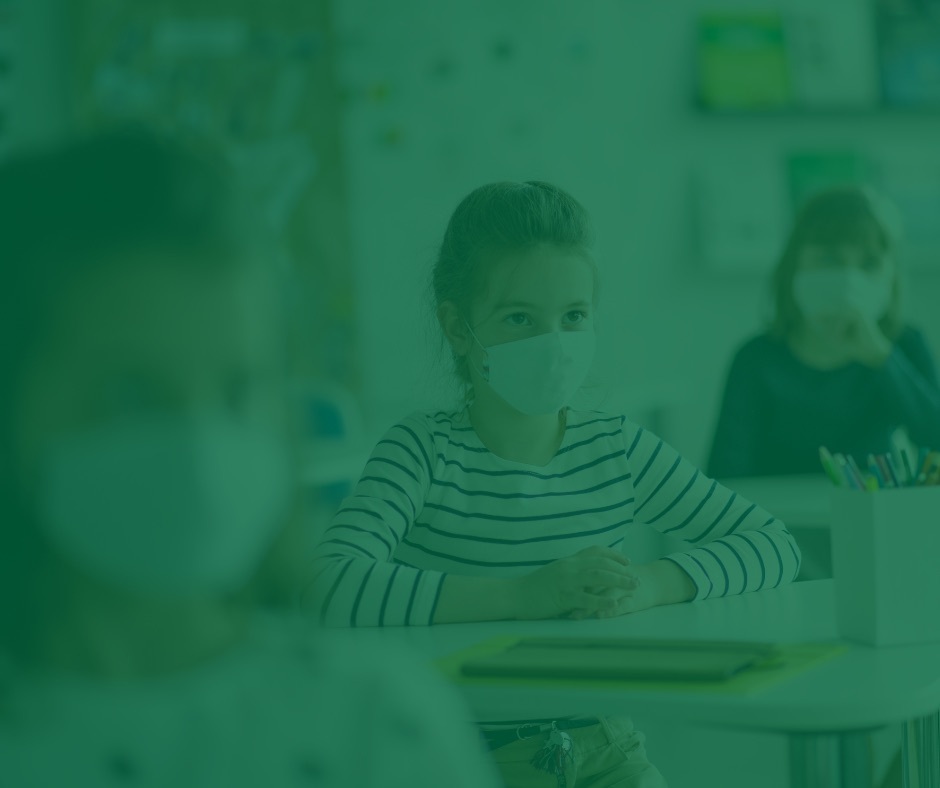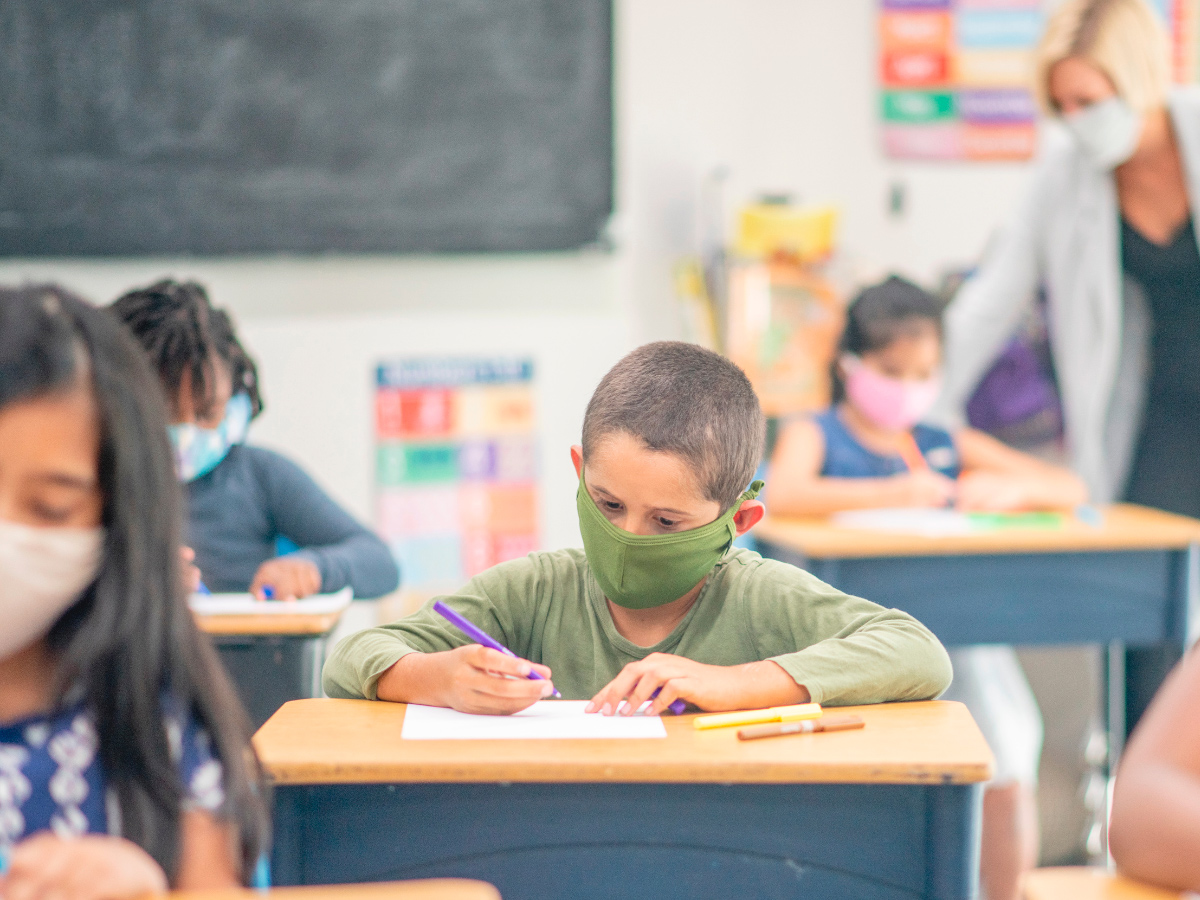
School Air Filtration: What Should Schools Do to Keep the Air Safe? Report by Camfil USA Air Filters
Indoor Air Solutions for Schools, According to Camfil Experts.
The World Health Organization (WHO) recommends that schools ensure adequate ventilation and increase total airflow supply to occupied spaces, if possible.
As a result of the present pandemic, air quality is at the forefront of many individuals’ minds for the first time. But reducing infection risk isn’t the only reason why improving air quality is essential for public health, particularly that of young, developing children and adolescents as they return to in-person school.
Not only is high quality air filtration a factor in reducing the risk of spreading COVID-19 infections in public buildings, cleaner air is a predictor of improved cognition and productivity, while poor air quality correlates with a variety of poor health outcomes. Though many parents have opted for their children to attend school virtually, teachers and those students attending school in person must have adequate protection from poor indoor air quality.
(Related: Air filtration and HVAC experts from Camfil recommend air cleaners to protect children in schools.)
Why is air filtration important in schools?

With developing immune systems and growing lungs, children are especially vulnerable to the effects of poor air quality. UNICEF (the United Nations Children’s Fund) explains that this is because on average, children inhale a larger volume of air in proportion to their body size per breath than adults do. This also means children inhale a larger proportional volume of hazardous chemicals and particulates.
Many school buildings are far from the ideal environment for developing children due to the Indoor air quality being affected not only by pollution coming in from outdoor sources (busy roads, for example), but also because the buildings themselves often emit dangerous substances. Additionally, older buildings are prone to releasing a residue of toxic gases from tosic outdated building materials into the air.
The COVID-19 infection rate is low and rarely fatal in children or adolescents compared to older adults. While there is a low risk of children transmitting the virus, the seriousness of the disease demands all reasonable steps be taken before reopening schools to reduce the risk to a child’s family members at home who could be a higher risk due to comorbidities.
What Are the Benefits of Clean Air In Schools?
Aside from the strong case that high quality air filtration is a good step towards reducing the risk of COVID-19 infection, breathing clean air provides a whole host of benefits to young children and adults alike.
Cleaner lungs
Better immune system
Longer lifespan
Reduced allergy and asthma symptoms
Improved mood
Improved productivity
What Does the World Health Organization Say About Ventilation in Schools?
The World Health Organization (WHO) recommends that schools ensure adequate ventilation and increase total airflow supply to occupied spaces, if possible. Clean, natural ventilation (i.e., opening windows) should be used inside buildings where possible, without re-circulating the air.
Introducing outside air is a challenge for the schools located in many regions with cold temperatures in the winter months, as well as the schools in regions with very hot and dry weather for long portions of the school year. There are additional challenges for schools located adjacent to high-traffic roads where there is risk of exposing their students to dangerous air pollution from exhaust fumes if windows were kept open. The exposure could mean a far greater risk for long term health issues.
All operational heating, ventilation and air conditioning (HVAC) systems should be regularly inspected, maintained and cleaned. Rigorous standards for installation, maintenance and filtration are essential to make sure the systems are effective and safe. One recommendation is to consider running the systems at maximum outside airflow for two hours before and after times when the building is occupied.
What Does the CDC Recommend for Ventilation in Schools?
As noted by the Centers for Disease Control (CDC), the reason why the SARS-CoV-2 virus is so much more communicable indoors than outdoors is because wind (even a very light breeze) rapidly decreases the concentration of viral particles, thus decreasing the chance of inhaling an infected particle. According to the CDC, “ventilation mitigation strategies help to offset the absence of natural wind and reduce the concentration of viral particles in the indoor air.”
For ventilation in community buildings, including public schools, the CDC recommends the following to improve central airflow:
Increase air filtration to as high as possible without significantly reducing design airflow.
Inspect filter housing and racks to ensure appropriate air filter fit and check for ways to minimize filter bypass.
Check air filters to ensure they are within their service life and appropriately installed.
Consult an air filtration specialist to ensure that your HVAC system is optimized to improve central airflow.
Indoor Air Solutions for Schools, According to Experts.
Air filtration experts from Camfil, one of the world’s leading air filtration manufacturers and researchers, recommend the following two air filtration systems for schools. Because both are stand-alone air filtration systems, they do not require replacing or adapting a building’s HVAC system (which would be a financial impossibility for most schools), and can be used in any space. Both air purifiers are designed for use in small spaces, and are therefore quiet, so they won’t disturb classroom instruction or student concentration.
Camfil’s City M Air Purifier
The City M Air Purifier includes a HEPA-grade particulate filter and a molecular filter that work in conjunction with one another to remove dust, contaminants, harmful VOCs and odors for healthier indoor air. The City M Air Purifier consumes 50% less energy than units of similar size.
Read more about the City M here.
Camfil’s CamCleaner CC500
The CamCleaner CC500 air purifier was originally designed early in the pandemic for hospitals that needed to create negatively pressurized isolation areas. The unit was also engineered to serve as a standalone air purifier for offices, schools, and other public buildings. The CC500’s MERV-9/9A prefilter extends the life of the 99.99% HEPA filter, leading to lower overall running and maintenance costs.
Read more about the CamCleaner CC500 here.
For more information about which air purifier is the right fit for your school, let a local Camfil expert help you.
About Camfil Clean Air Solutions
Camfil believes that breathing clean air should be a human right. For more than half a century, Camfil worldwide has been helping people breathe cleaner air. As a leading manufacturer of premium clean air solutions, we provide commercial and industrial systems for air filtration and air pollution control that improve worker and equipment productivity, minimize energy use, and benefit human health and the environment. During the COVID-19 pandemic, Camfil has been applying their decades of experience in biosafety containment, healthcare, and other sectors of the air filtration industry to provide technological solutions for the public as well as in hospitals and healthcare facilities. To get in touch with a local Camfil consultant, please click here.
##
Media Contact:
Lynne Laake
Camfil USA Air Filters
T: 888.599.6620
F: Friend Camfil USA on Facebook
T: Follow Camfil USA on Twitter
Y: Watch Camfil Videos on YouTube
L: Follow our LinkedIn Page
Resources:
https://cleanair.camfil.us/2021/02/26/what-should-schools-do-to-keep-the-air-safe/
https://catalog.camfil.us/schools-saving-energy.html
Coronavirus disease COVID-19: Schools — World Health Organization
Ventilation in buildings — Center for Disease Control